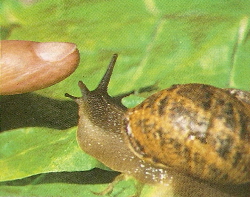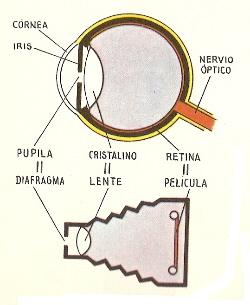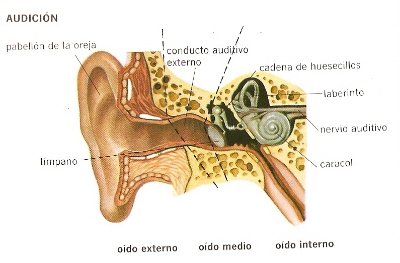
4. The hearing
The ear has two missions: it collects the external sounds and maintains the equilibrium. Its parts are:
In the outer ear are:
- The pinna.
- The external ear canal that accumulates
earwax and there are little hairs that prevent the entry of insects and dust.
- The eardrum, which is a membrane similar to that of a drum. It collects the vibration caused by sound waves.
In the middle ear, we have:
- Four smallest bones called the
malleus, incus, lenticular and stapes. They transmit vibrations.
In the inner ear:
- The cochlea, with cells that perceive sound.
- The eighth cranial nerve that transmits information to the brain.
- The labyrinth consists of semicircular canals that control equilibrium.
5. Answers with the following parts of the ear: pinna, external ear canal, eardrum, smallest bones, cochlea, eighth cranial nerve or labyrinth
It is the ear |
|
They transmit vibrations |
|
It perceives vibrations |
|
It perceives sound |
|
It transmits information to the brain |
|
It controls the equilibrium |
|
|

|
6. The smell
The organ of smell allows us to perceive odors. The nose is the organ of smell.
We distinguish these parts:
- The nasal cavities are on the inside part of the nose.
- The olfactory epithelium or pituitary, which perceives odors.
- The olfactory nerve that transmits information to the brain.
|
7. Answer with the following parts of smell: nasal cavities, olfactory epithelium and olfactory nerve
Inside part of the nose |
|
Called pituitary |
|
It transmits the information to the brain |
|
It perceives odors |
|
|
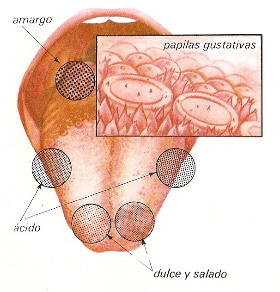
|
8. The taste
The tongue is the organ of taste.
The sensory cells of tasted buds perceive flavors and transmit this information to the brain via the gustatory nerve.
Tasted buds detect four tastes: sweet and
salty at the tip of the tongue; the acid in the sides; and the bitter at the bottom.
The flavor that we perceive in the brain is a mixture of the above.
|
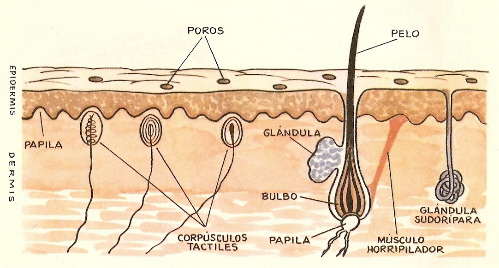
9. The touch
This sense allows us to appreciate the shape, roughness and temperature of the bodies. We distinguish:
- The epidermis is the most superficial part of the skin.
- The dermis is the inner part of the skin, where the nerve endings or
tactile corpuscles are. They receive and transmit sensations to the brain.
10. Hygiene of the senses
We should follow these instructions:
- Do not touch the eyes with dirty hands.
- Go to the optician when we observe any vision problem.
- Keep the external ear canal clean. If a wax of earwax appears, it should be cleaned with tepid water or we should go to the doctor.
- Avoid prolonged and intense noise because they can cause hearing loss and even deafness.
- Keep the nose clean and do not introduce strange bodies.
- Avoid very cold or very hot foods and drinks.
- Wash hands and take a shower frequently.
11. Answer if these advices are correct or incorrect:
Never go to the optician |
|
Do not touch the eyes with dirty hands |
|
Listen music with high volume |
|
Drink hot drinks |
|
Take a shower frequently |
|
Clean the ear |
|
Keep the nose clean |
|
| Educational applications |
Natural sciences |
In Spanish | Interactive |
®Arturo Ramo García.-Record of intellectual property of Teruel (Spain)
No 141, of 29-IX-1999
Plaza Playa de Aro, 3, 1º DO 44002-TERUEL
